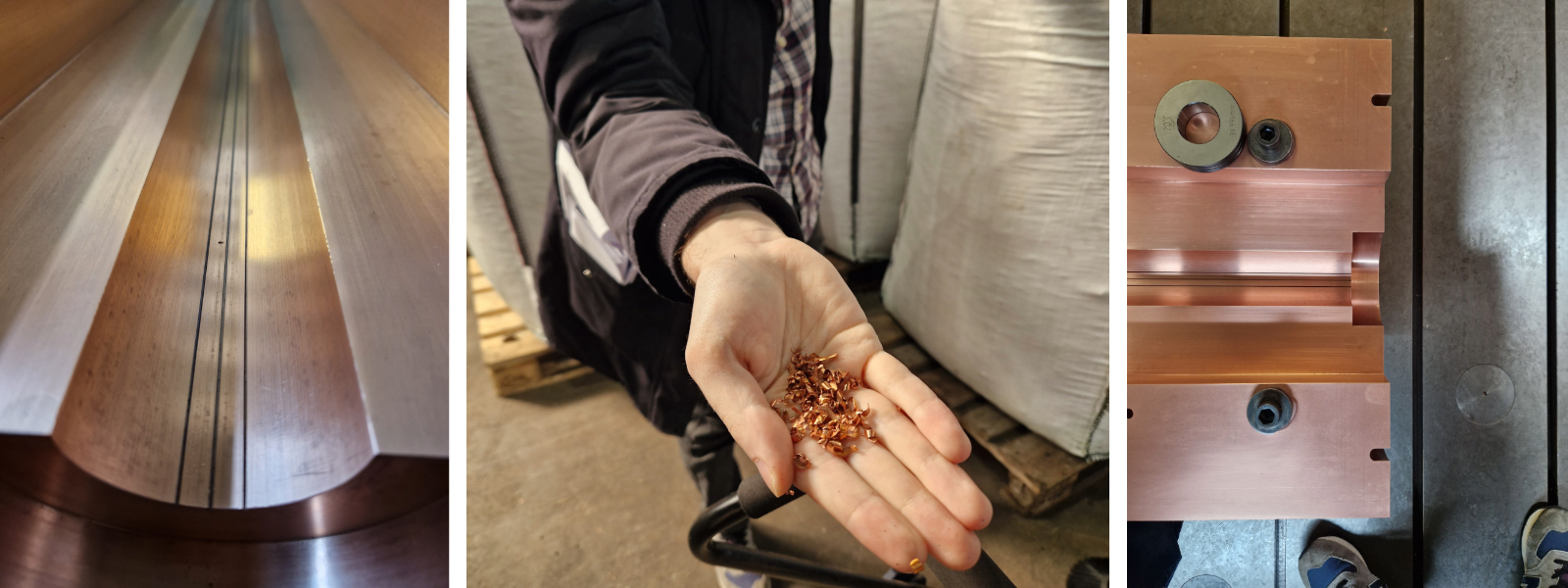By Antonio Alonso and Francisco Sanchez Galan (CERN)
The first two Target Absorbers for Secondary particles (TAXS) of the series have been produced by the supplier, and successfully completed all factory inspections and load tests.
These special components are being developed for the HL-LHC where many more particle collisions will take place. The TAXS units will be installed in the ATLAS and CMS detectors to absorb leftover particles from the collisions. Their job is to protect important quadrupole focusing magnets nearby, especially the last one in the line before the experiments .
Each TAXS is made of two large pieces of copper that fit tightly around the beam pipe where the particles travel. Manufacturing precision is essential as the fit between the two halves and the vacuum pipe should be perfect to prevent any deformation., and to ensure thermal surface contact with the pipe (so that the heat from the pipe warming up can be transmitted to the halves, to dissipate the energy deposited by the collision of residual particles).

Figure 2. TAXs assemblies close up, and copper shavings to be recycled for the next batch.
The TAXS assemblies are made of pure copper due to its thermal and material properties. Two TAXS absorbers, 3.2 tons each, were sculpted from 17 tons of pure copper; the shavings not used will be melted down to be recycled for the next batch.
The first one has now arrived at CERN after passing inspections and a test to make sure it can be safely lifted and installed. The next steps will include further tests to check that its size and shape meet the exact requirements for installation.

